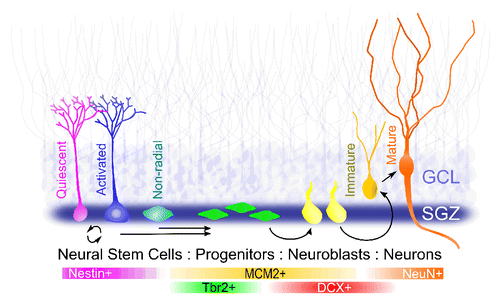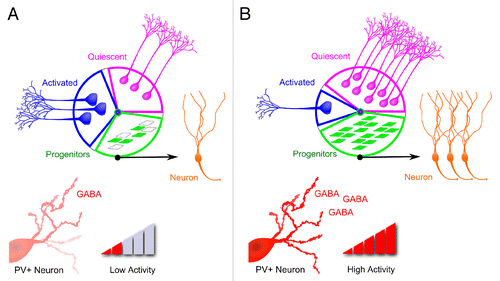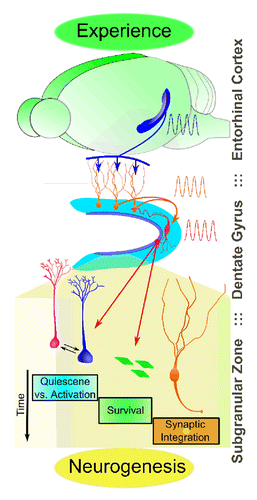Figures & data
Figure 1. Adult neurogenesis in the dentate gyrus of the hippocampus. Shown is a schematic summary of the development of newborn cells as characterized by expression of specific molecular markers at each stage.

Figure 2. Diametric regulation of two sequential proliferative processes of adult hippocampal neurogenesis by PV+ neuron activity. Shown is a model of diametric regulation of quiescent neural stem cell activation, and survival and maturation of their proliferative neuronal progeny: during low activity within dentate gyrus (A), decreased PV+ neuron activity suppresses the survival of proliferating neuronal progenitors and simultaneously promotes expansion of the neural stem cell pool via symmetric cell division; conversely, when the activity in the dentate gyrus is high (B), activation of PV+ neurons promotes the survival and maturation of proliferating neuronal progenitors and inhibits quiescent neural stem cell activation.

Figure 3. Experience-dependent regulation of adult neurogenesis mediated by local interneurons. Shown is an illustration of how local interneurons may couple experiential activity to the regulation of adult neurogenesis at distinct developmental stages. Entorhinal cortical inputs activate dentate granule neurons, which in turn activate local PV+ interneurons. Local PV+ interneurons serve as intermediary cells which relay signals to adult neural stem cells and their progeny.

